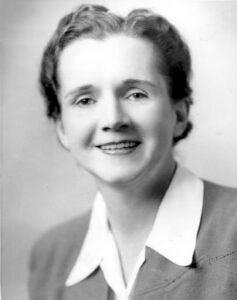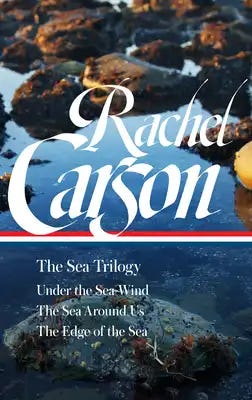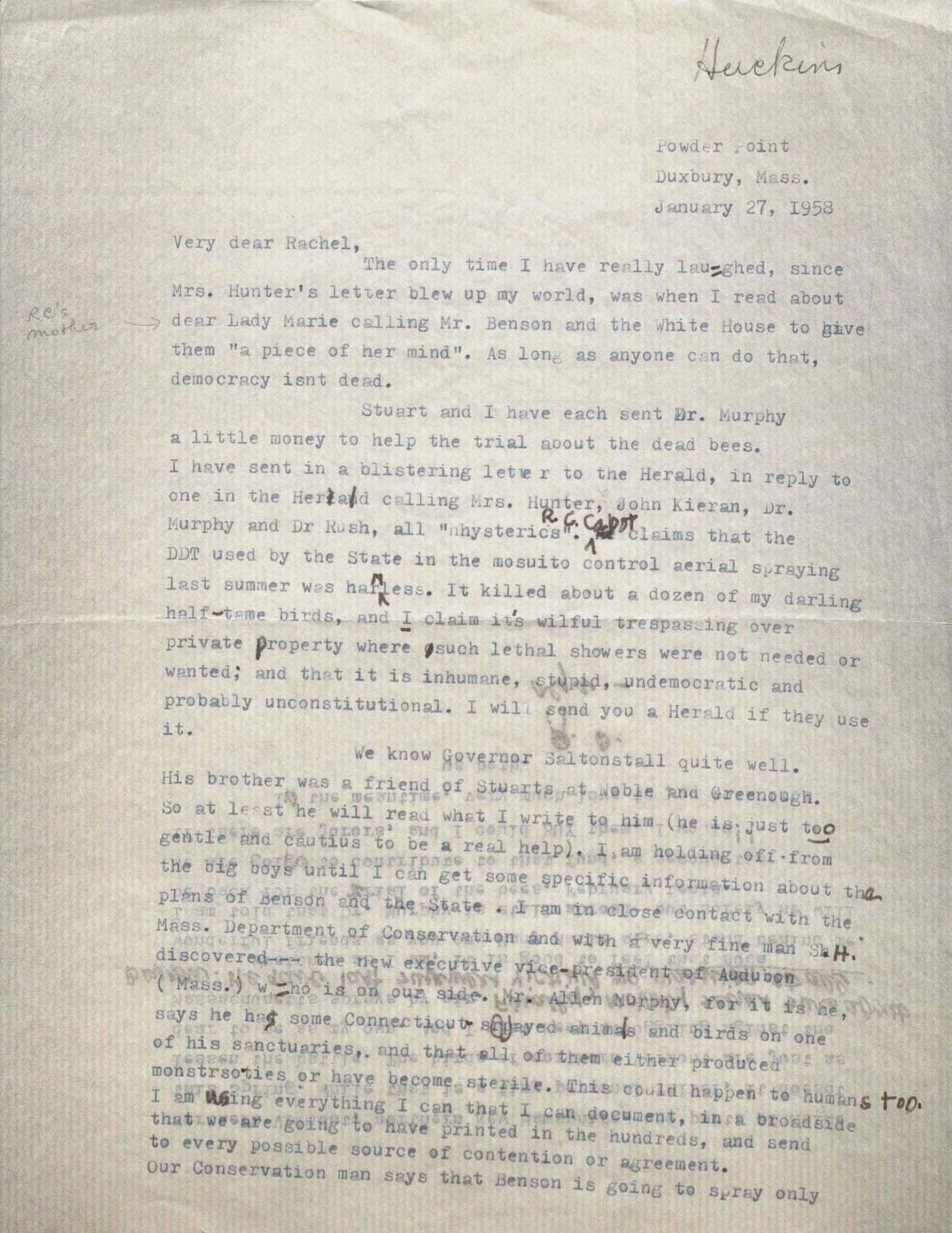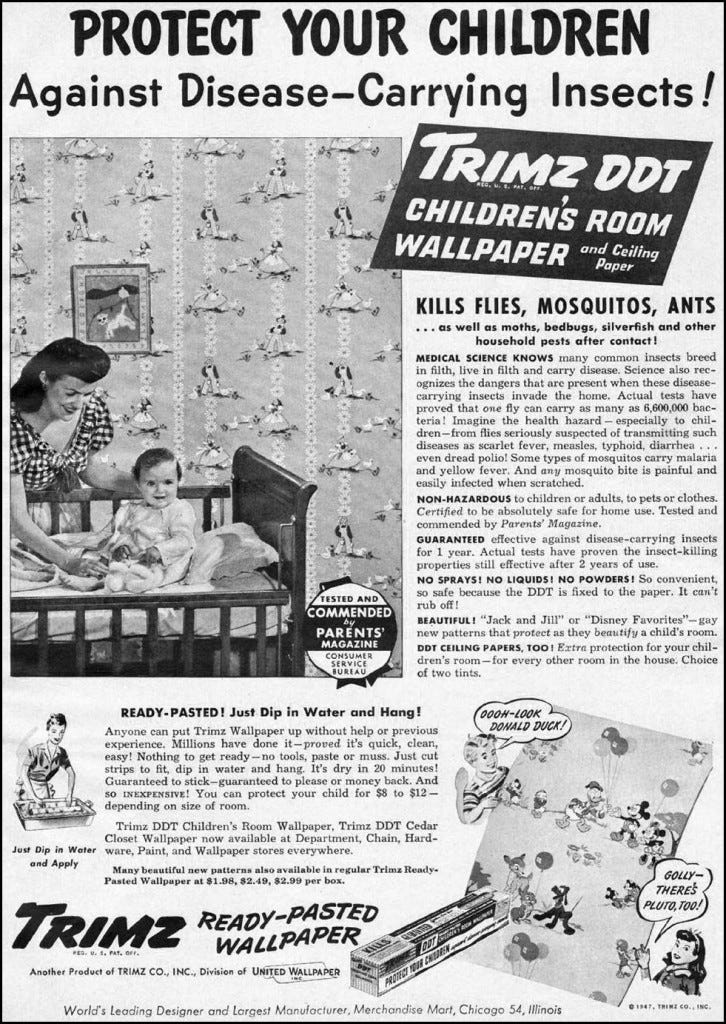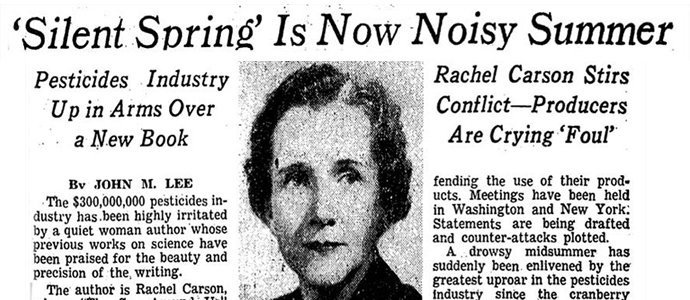Rachel Louise Carson, marine biologist, nature writer, and inspiration for the modern environmentalist movement, was born May 27, 1907, in Springdale, Pennsylvania.
I’m writing this short tribute for Rachel on her birthday to honor her courage and prophetic voice in speaking out about the collateral damage in nature from overuse of synthetic chemical insecticides in the face of a smear campaign against her by the chemical industry and its lobbyists.
A few years ago, I found an original edition of her 1962 book Silent Spring in a pile of used books a professor was giving away. I love old books, so I took this one home. Last week I devoured the book.
Rachel Carson began college as an English major but changed her major to biology. She earned a master’s degree in zoology from John Hopkins University. She wanted to go on for a PhD, but in 1934 she needed to look for a full-time job to help support her parents during the Great Depression. She worked as a junior aquatic biologist and copy writer for the U.S. Bureau of Fisheries which became the U.S. Fish and Wildlife Service.
During her time at the agency, she also published nature writing feature articles and her first book, Under the Sea-Wind in 1941. Her writing combined science with beautiful contemplative prose and inspired in her readers a sense of wonder about the natural world. In 1951 she turned to a full-time writing career and wrote two more books about the ocean.
Carson had first heard about the insecticide DDT in 1945. DDT was being called the “insect bomb.” She sent a proposal to Reader’s Digest for an article about concerns over DDT, but they declined, saying their female readers would find the topic unpleasant. She continued to learn about DDT research and its uses and problems but did not write about it until Silent Spring in 1962. Her friend Olga Huckins lit the spark.
Stuart and Olga Owens Huckins lived in a modest home in Duxbury, Massachusetts in the 1950s. In their backyard were three ponds and their personal bird sanctuary. The couple could hear dozens of birds singing in their woods and wetlands. In the summer of 1957, the State of Massachusetts devastated their sanctuary with an arial spraying of DDT to kill mosquitoes on a nearby marsh. The Huckins’ ponds were contaminated, the birds were dead, and there were more mosquitoes than ever. Olga Huckins wrote to Rachel Carson and asked her for help.
The letter sparked Carson into finally writing about the devastation of DDT, and other pesticides, on bird and aquatic life and the dangers to human beings. She wrote her landmark work Silent Spring. The title referred to a possible future scenario where no songbirds remained. She wrote, “What has already silenced the voices of spring in countless towns in America? This book is an attempt to explain.”
The response to the book was explosive. People had not been aware of the dangers of DDT which toxic to the nervous system.
For some, Rachel’s book became a call for regulation on substances which could cause grave harm to nature. However, the chemical industry and its lobbyists attacked Carson’s credentials, mocked her as a female in science, and even claimed that, since she was not married though she was attractive, she must be a communist.
The public eventually ignored the chemical industry, and a generation was galvanized to protect the environment.
In 1962, President Kennedy mentioned Carson’s book at a press conference where he stated that the President's Science Advisory Committee was studying the issue of pesticide safety. The research report eventually produced substantiated Carson’s conclusions concerning the detrimental effects of pesticide spraying
Carson testified about the dangers of DDT before two Senate committees in 1963. The next April she died from the breast cancer that she had been fighting for a decade. But the modern environmental movement was underway, thanks in large part to Rachel Carson’s courage.
Here are a few of the actions taken and groups organized since Rachel Carson’s death:
1966 Endangered Species Act
1969 Greenpeace organized
1970 First Earth Day Celebrated
1970 Environmental Protection Agency founded
1972 League of Conservation Voters organized
1972 ten years after the publication of Silent Spring, DDT was banned for use in the U.S.
In 1980, President Jimmy Carter awarded Rachel Carson the Presidential Medal of Freedom. A postage stamp was issued in her honor in 1981.
A statue of Rachel was placed by the water in Woods Hole, Massachusetts, in 2013.
Happy Birthday, Rachel. Thank you for inspiring your generation, and beyond, with a sense of wonder about nature and a call to protect its beauty and balance.
Those who dwell among the beauties and mysteries of the earth are never alone or weary of life. (Rachel Carson)
We now stand where two roads diverge. But unlike the roads in Robert Frost’s familiar poem, they are not equally fair. The road we have been traveling on is deceptively easy, a smooth superhighway on which we progress with great speed, but at its end lies disaster. The other fork of the road—the one “less travelled by”—offers our last, our only chance to reach a destination that assures the preservation of our earth. (Rachel Carson’s opening words to the final chapter in Silent Spring.)




